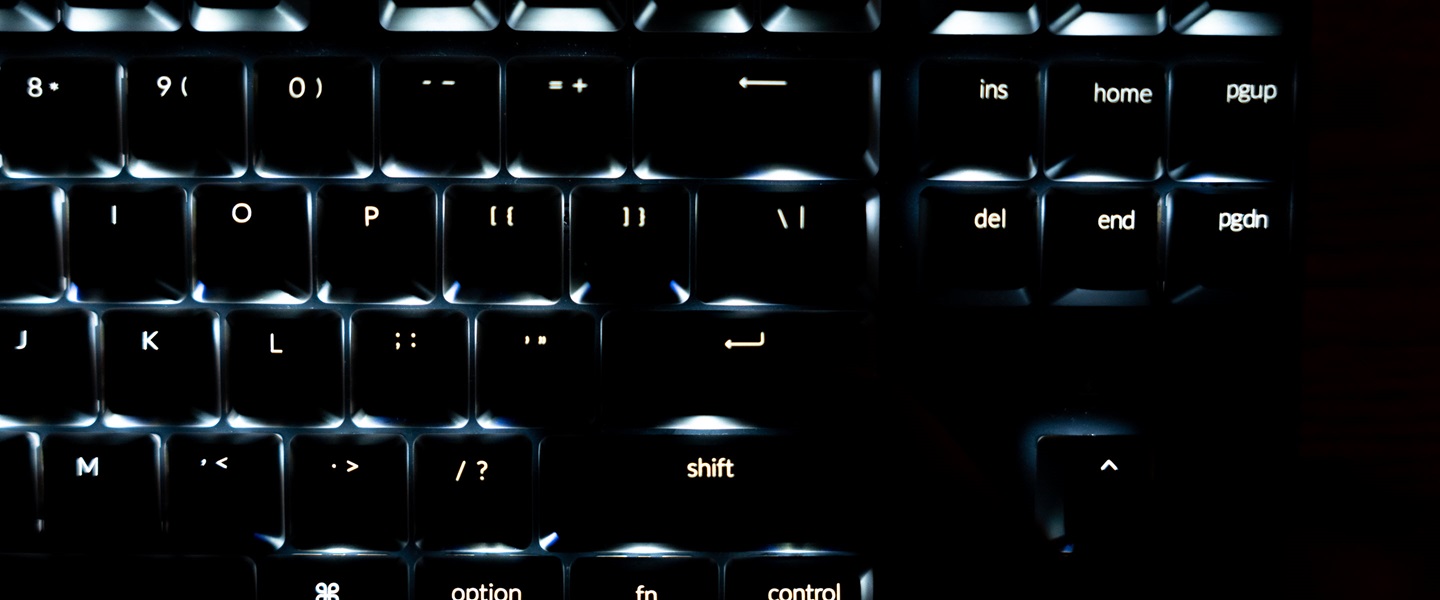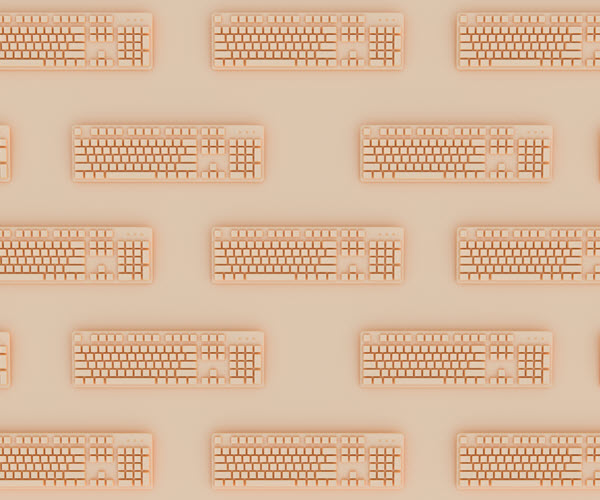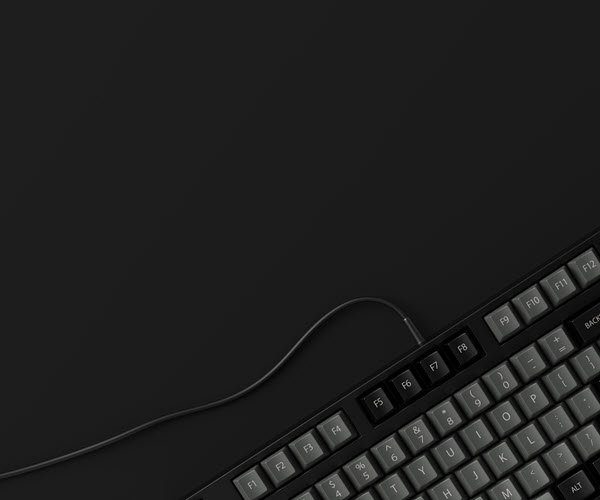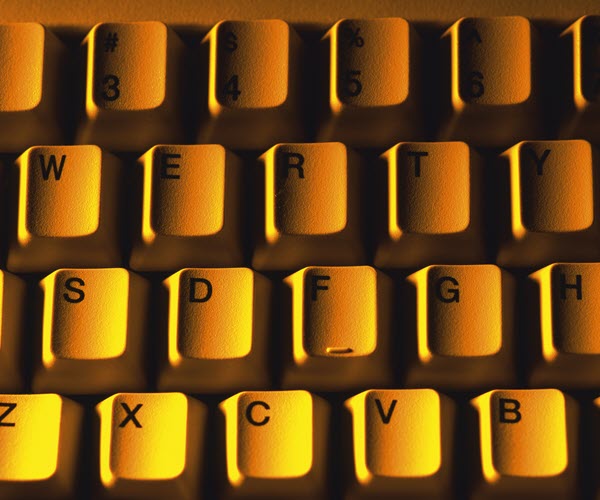The Complete Guide to Keyboard Sizes
From full-size to 20%, here’s how to find the perfect computer keyboard size for you

From full-size to 20%, here’s how to find the perfect computer keyboard size for you
Picking out the perfect keyboard for your setup starts with finding the right size.
Do you want to dedicate your desk to a broad assortment of functions and media controls at your fingertips, or do you prefer a more minimalist design that prioritizes day-to-day usability? There’s no one right computer keyboard size for every user, but after you read this guide, you may just find the right one for you.
Every key you may need, exactly where you expect it. That’s the idea behind full keyboard sizes, and the reason why they’ve remained an extremely popular choice for computer users of all kinds.

Many computer operators learned on full-size keyboards, so if you’re looking for a device that will be easy to pick up and use, they’re a great choice.
If you do a lot of work with data entry, spreadsheet management, or mathematical calculations on your computer, opting for a keyboard with a dedicated numpad could speed up your processes.
As the name suggests, full-size keyboards tend to be the largest of any type of board, and even the smallest take up a substantial chunk of desk space.
Read more in our complete guide, Full-Size Keyboards: The Benefits & Drawbacks of Going Big.
Did You Know? Ready to dive headfirst into specialist keyboards? Our handy guide will help you find the best mechanical keyboard to fit every kind of budget.
No numpad, no problem
Tenkeyless keyboards are largely defined by what they don’t have: a dedicated cluster of keys for the numpad. Lopping off the numpad means they save a substantial amount of horizontal space while still supporting the majority of what a full-size keyboard can do.

For many users, tenkeyless keyboard sizes land in the sweet spot between space considerations and familiar operation. Aside from adjusting to the lack of numpad, no changes to muscle memory are necessary.
Losing the numpad means saving a substantial amount of space on the right-hand side of the keyboard. This can mean more flexible ergonomic placement options when using a mouse.
As one of the more common types of computer keyboard sizes out there, opting for a tenkeyless board will give you plenty of options for looks — from the keycaps to the body of the board to RGB lighting.
Find out more reasons to go numpad-free in our guide, TKL Keyboards: 5 Benefits of Ditching the Numpad.
The maximalist experience
Maximum utility-per-inch
If you’ve ever looked at a keyboard and thought “I bet you could fit more keys in here if you really tried,” you’re a perfect candidate for a 75% keyboard. These boards have almost all the same functionality of a tenkeyless board while taking up notably less space.

With 84 keys packed into a compact yet versatile frame, the Epomaker EP84 is a great pick for users who want to hit the mid-range of mechanical keyboard sizes.
The second version of Keychron's Q1 Board is a popular pick among mechanical keyboard fans, thanks in part to its many build options (including a knob in the upper right, perfect for volume or other media adjustments).
This super-sleek 75% keyboard features a low-profile design that makes it great for use both at home and while traveling. It features Bluetooth support for pairing with tablets and other mobile devices.
Read more about this uniquely optimized size in 75% Keyboards: 3 Benefits of a Balanced Board.
Did You Know? The intelligently refined layout behind HHKB keyboards was first created more than 25 years ago, with the latest version continuing to build on that legacy.
No numpad, no problem
Ready to navigate
If you want the smallest possible keyboard size but you regularly use the arrow keys, look no further than a 65% keyboard. These boards effectively split the difference between all-in compactness and practical utility by leaving off less-used keys such as the function row while retaining those more commonly used for navigation.

This budget-friendly introduction to smaller mechanical keyboard sizes comes with options for hot-swappable switch support, as well as wireless and wired connection.
This low-profile keyboard is great for those who want to admire their mechanical key switches (or just have an easier time cleaning their board), and it comes with some great lighting options.
One of the most popular lines of 65% keyboards on the market, the MIYA Pro’s slightly more spacious layout and range of designs make it an easy recommendation.
Learn more about this keyboard size by navigating over to 65% Keyboards: 3 Reasons to Streamline Your Setup.
Maximum utility-per-inch
Small but mighty
For maximum utility with minimum footprint, it’s hard to do better than a 60% keyboard. These boards feature key layouts that were built with modern computer users in mind, keeping the keys you need front and center while stripping away everything else.

With a uniquely revised keyboard layout and best-in-class Topre key switches, HHKB boards have long been a favorite among those who type to live. The latest edition of the board builds in seamless wireless support for up to 4 Bluetooth devices.
This popular base spec for boards is available in a dizzyingly wide selection of different colorways and special editions. Its unique body design has helped it become one of Ducky’s most beloved keyboards.
Another budget-friendly board from Keychron, the K12 doesn't sacrifice on build quality or utility — and its built-in battery supports extended operation in wireless mode.
Find your ideal mix of compact size and versatility in 60% Keyboards: The 3 Biggest Benefits of Going Small.
Ready to navigate
Space-saving ingenuity
We left the world of mainstream computer keyboard sizes behind at 60%, and have officially entered the realm of the joyfully tiny (yet still surprisingly effective) specialty keyboard. Whether you want a keyboard that can still be your daily driver or an addition to the typing setup you already have, you’ll find it here. .

Similar to a 60% keyboard but without a dedicated number row, 40% keyboards are a great demonstration of the power of layers: You’ll still be able to type in numbers, but you’ll have to press a combination of keys to do so.
What if you had a keyboard that was almost exclusively letter keys? No shift key, no space bar, just letters? You’d have a 30% keyboard, and though using one well may require some tweaks to muscle memory, they’re a great DIY keyboard project to start with.
This is another way to refer to a standalone numpad (which makes sense, since 20% is what’s left over from an 80% tenkeyless keyboard). They can be great for part-time number crunching setups, leaving more of your desk free otherwise.
Find out more about these delightful minuscule boards in 3 Tiny Keyboard Sizes That Do a Lot With a Little.
Small but mighty